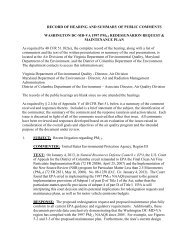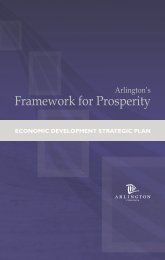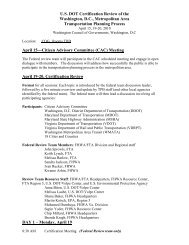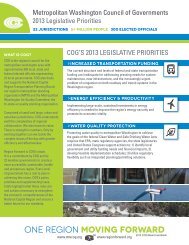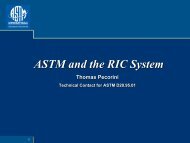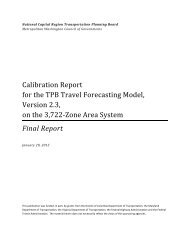PTI Local Government Energy Assurance Guidelines - Metropolitan ...
PTI Local Government Energy Assurance Guidelines - Metropolitan ...
PTI Local Government Energy Assurance Guidelines - Metropolitan ...
Create successful ePaper yourself
Turn your PDF publications into a flip-book with our unique Google optimized e-Paper software.
NRF Resource Center<br />
This Partner Guide and the documents referenced in it, as well as other materials that directly or indirectly support<br />
the NRF, can be found in the NRF Resource Center. To assist readers in implementing the NRF, the Resource Center<br />
is an online repository of supporting documents, resources, and educational materials. It is intended especially to<br />
assist emergency management practitioners. This repository provides a single, web-based portal for documents,<br />
information, training materials, and other tools needed for response partners to understand and execute their roles<br />
under the NRF. The online Resource Center’s home page may be found at http://www.fema.gov/NRF.<br />
C.2 <strong>Local</strong> <strong>Government</strong>s and Emergency Support Functions<br />
The Emergency Support Functions (ESF) are a set of annexes to the National Response Framework that group<br />
governmental and certain private sector capabilities and responsibilities into an organizational structure to facilitate<br />
implementation of the emergency response actions called for as part of the NRF. The ESFs are designed to help<br />
responders provide the support, resources, and services that are often needed to save lives, protect property and the<br />
environment, restore essential services and critical infrastructure, and help victims and communities return to normal<br />
following domestic incidents that require a coordinated Federal response. ESF-12—as the <strong>Energy</strong> Function—is but<br />
one of 15 Emergency Support Functions. The ESF system is a subset of the NRF and as such should be viewed in<br />
that context. Below is a listing of all the Emergency Support Functions. 49<br />
ESF-1<br />
ESF-2<br />
ESF-3<br />
ESF-4<br />
ESF-5<br />
ESF-6<br />
ESF-7<br />
ESF-8<br />
ESF-9<br />
ESF-10<br />
ESF-11<br />
ESF-12<br />
ESF-13<br />
ESF-14<br />
ESF-15<br />
Transportation<br />
Communications<br />
Public Works and Engineering<br />
Firefighting<br />
Emergency Management<br />
Mass Care, Housing, and Human Services<br />
Resources Support<br />
Public Health and Medical Services<br />
Urban Search and Rescue<br />
Oil and Hazardous Materials Response<br />
Agriculture and Natural Resources<br />
<strong>Energy</strong><br />
Public Safety and Security<br />
Long-term Community Recovery and Mitigation<br />
External Affairs<br />
The ESF that is most relevant to this document is ESF-12 (energy). Via ESF-12, DOE plays a coordinating role<br />
that facilitates the application of Federal response resources, in conjunction with State, local, and private sector<br />
efforts. ESF-12 establishes DOE as the focal point within the Federal government for gathering and disseminating<br />
information on impacts to energy infrastructure, as well as the primary Federal point of contact for the private sector<br />
in coordinating response/infrastructure restoration activities. Knowledge of DOE’s roles and responsibilities via ESF-<br />
12 can provide a basis for understanding how Federal resources can be applied to local energy emergency response,<br />
and the ESF-12 framework can serve as a useful model for codifying local energy emergency response roles and<br />
responsibilities, if this has not been done already. 50<br />
49<br />
http://www.phe.gov/Preparedness/support/esf8/Pages/default.aspx.<br />
50<br />
For more information on ESF-12, see: http://www.fema.gov/pdf/emergency/nrf/nrf-esf-12.pdf.<br />
86 | Appendix C – Federal <strong>Energy</strong> <strong>Assurance</strong> Planning and Response Initiatives



